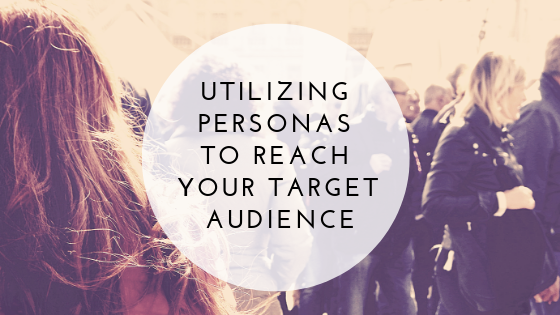Utilizing Personas to Reach Your Target Audience
Wouldn’t it be wonderful if your company could target and attract everyone as a customer? Every single person? It’s not realistic. This is where target audiences come into play. Not every consumer is interested in every product. People have different needs, wants, goals, circumstances and limitations. Of course, businesses still need to make profits, which requires consumers. Identifying your target audiences will allow you to target the more profitable customers in a strategic way.
Target Audiences
Before you can create personas, you must understand what a target audience really is. A target audience is a group of people that will most likely be interested in the services or products that your business provides. Start with a series of questions. First, who would benefit the most from what you are selling? What problems do you solve for your consumers? How do you stand out in comparison to your competitors??
The process of answering these questions will help you identify your target audience. Depending on your product, you might not have to be specific. If you sell a common household item like toothpaste or soap, you may appeal to much of the population while providing very little education about your product. You will need to set yourself apart from competing brands. However, some target audiences are more specific. For example, if you sell women’s pantsuits, you’ll want to target 20 to 55-year-old women with professional careers or professional career goals. Depending on the price point of your products, you could also select your ideal customer by salary, location, etc.
Customer Personas
When creating a customer persona, it’s important to begin with data. Google Analytics, Facebook Insights, Twitter Analytics, or any website analytics can help with this. Other resources could include email lists, social media following or any lead data that your company has. From here you will identify common trends within the data. These consistencies will help you create your customer personas.
Creating the Persona
There are many different types of people that require many different types of products. It is commonly recommended to create 3-5 personas for your business. Once you have identified the trends within your data, you can lay out more specific details about your personas. This information will include age, gender, salary, location, education and job title or category of the persona. The category may include “moms,” “executive,” “student,” etc. Matching them with a stock photo will take this persona a step further. The photo is meant to keep you on track for who you are marketing for.
Next, you will infer their goals and circumstances. This includes personal or professional goals, challenges, values, fears, family life, company culture, hobbies and household income. Why does this step matter? Well, imagine you are selling stain-resistant furniture. Women are typically the decision maker when it comes to household furniture. Knowing if she has a pet or small child in her home would be important to know. She is likely a better customer than a senior couple purchasing furniture for a second home.
It’s okay if your data has gaps. Use educated guesses to fill them and complete the personas. Below is an example of a built-out persona, and you can find more visual examples here.

Using the Persona
Once you finish your 3-5 personas, you will want to utilize them as if they were a part of your marketing team. Where would they get information? What messages would appeal to them? What messages wouldn’t? As you build out your marketing strategy, you should keep these ideal personas in mind to ensure that you’re staying on track to target them.
This sounds like a lot of work, but it can be fun to create the ideal customer in this manner. You will be surprised how attached you become to them and how well you come to know them.

